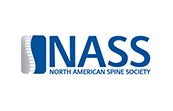Sacro-lliac Joint Injection Patient Information
Sacro-iliac Joint Injection Patient Information
What is the Sacro-iliac Joint?
The Sacro-iliac joint (SIJ) is the largest joint of the spine and is located at the base or low back region. The SIJ transfers load between the trunk and lower extremities and is central to the biomechanics of human movement.
What is a Sacro-iliac Joint Injection?
Sacro-Iliac Joint Injection is an injection of long lasting steroid (“cortisone”) in the Sacro- Iliac joints.
What is the purpose of it?
The steroid injected reduces the inflammation and/or swelling of tissue in the joint space. This may in turn reduce pain, and other symptoms caused by inflammation / irritation of the joint and surrounding structures and improve movement.
How long does the injection take?
You will be asked to lie nearly flat on your stomach. Under local anesthesia, using X-ray guidance, a small needle is positioned into the facet joint or along the facet joint nerves. Medication is then injected (usually a mixture of anti-inflammatory steroid and long-acting anesthetic). Each injection takes about 15 minutes. Either one or both sides may be performed in the same session depending upon your symptoms.
Will the injection(s) hurt?
The procedure involves inserting a needle through skin and deeper tissues (like a “tetanus shot”). So, there is some discomfort involved. However, we numb the skin and deeper tissues with a local anesthetic using a very thin needle prior to inserting the needle into the joint. Patients have the choice of having intravenous sedation and analgesia, which makes the procedure easy to tolerate.
How is the injection performed?
The procedure is performed with the patient lying on the stomach, under x-ray control. The patients are monitored with EKG, blood pressure cuff and blood oxygen-monitoring device. The skin in the back is cleaned with antiseptic solution and then the injection is carried out. After the injection, you are placed on your back or on your side.
What should I expect after the injection?
Immediately after the injection, you may feel that your pain may be gone or quite less. This is due to the local anesthetic injected. This will last only for a few hours. Your pain will return and you may have a “sore back” for a day or two. This is due to the mechanical process of needle insertion as well as initial irritation form the steroid itself. You should start noticing pain relief starting the between the 3rd and 5th day or so.
What should I do after the procedure?
You should have a ride home. We advise the patients to take it easy for a day or so after the procedure. You may want to apply ice to the affected area. Perform the activities as tolerated by you.
Can I go to work to work the next day?
Unless there are complications, you should be able to return to your work the next day. The most common thing you may feel is sore back.
How long the effect of the medication lasts?
The immediate effect is usually from the local anesthetic injected. This wears off in a few hours. The steroid starts working in about 5 to 7 days and its effect can last for several days to a few months.
How many injections do I need to have?
If the first injection does not relieve your symptoms for a long enough time your provider may suggest additional injections or a procedure that offers more permanent relief.
In a six-month period, we generally do not perform more than three injections. This is because the medication injected lasts for about six months. If three injections have not helped you much, it is very unlikely that you will get any further benefit from more sacro- iliac joint injections.
What are the risks and side effects?
Generally speaking, this procedure is safe. However, with any procedure there are risks, side effects, and possibility of complications. The most common side effect is pain – which is temporary. Risks involve, infection, bleeding, worsening of symptoms, along with steroid based side effects such as weight gain, increase in blood sugar (mainly in diabetics), water retention, suppression of body`s own natural production of cortisone etc. Fortunately, the serious side effects and complications are uncommon.





